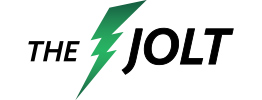Here’s a prediction.
In a few years, launching a crypto will be as common as launching a website.
Your favorite coffee shop will have one. Your gym. Your go-to podcast. Maybe even your church.
Today, most people still see cryptos as vehicles for speculation. A chance to get rich quickly.
In reality, cryptos are extremely practical and versatile tools. You can use them to raise money… build customer loyalty… and give investors a stake in a business.
For Day 3 of Crypto Week, I’ll show you a few real-world crypto use cases… and how to profit from it all.
- Ever hear of a crypto called StepN (GMT)?
It pays you to walk or run, using your phone’s GPS or a smartwatch to track movement.
The more you move, the more you earn. Fitness challenges, seasonal events, and social features keep users coming back.
That simple crypto incentive—move to earn—attracted nearly 6 million users. Together, they’ve logged a combined 400 billion miles.
At StepN’s peak, a friend of Executive Editor Chris Reilly made $700 just for taking a two-hour walk. Wild!
Then there’s Helium (HNT)—a project that flipped the traditional telecom model on its head. By incentivizing ordinary folks to set up hotspots at home, Helium built a nationwide 5G network without building a single cell tower.
When someone connects to a Helium hotspot, users earn HNT tokens. It’s a blueprint for how crypto can crowdsource billion-dollar infrastructure… without the billion-dollar price tag.
|
Or look at Hivemapper (HONEY). It’s building a decentralized map of the world that rivals Google Maps.
Google (GOOG) owns 85% of the mapping market. But its Street View cars are expensive and slow.
Hivemapper sells dashcams drivers can mount on their cars to upload street-level images. In return, they earn HONEY tokens.
This gives users a stake in the success of the map. Instead of one company owning and monetizing all the data, contributors get paid for helping to build it.
This type of incentive structure didn’t exist before crypto. It’s innovative and lucrative, and it will let new billion-dollar businesses flourish.
- Even the Pope could launch a token.
Sounds ridiculous, but why not?
Tokens let organizations raise money from all over the world. And they reward participation and build community.
Imagine the Vatican wants to fund a renovation. Instead of dipping into its reserves, it could launch a token. $HOLY holders could vote on the next restoration project. The token could facilitate charitable donations, or reward premium holders by inviting them to a private papal mass.
A stretch? New uses for disruptive technologies often sound silly the first time you hear about them. And versions of this are already happening.
Nike’s (NKE) SWOOSH platform already lets users co-create sneakers, earn royalties, and unlock exclusive product drops.
Nissan launched “Nissan Passport,” a crypto loyalty program that rewards customers for test drives and brand engagement.
Adidas’ ALTS gives token holders access to exclusive gear, invite-only experiences, and even voting rights over future product drops.
These aren’t just loyalty points. They’re programmable assets for a new kind of community equity.
Imagine Mr. Beast—a YouTuber with 200 million subscribers—wants to fund a new venture. But instead of raising money from venture capitalists and bankers, he drops a token. Holders could get early access to content, profit-sharing, and even vote on what project he does next.
The same logic applies to your favorite food brand, sports team, or activist movement.
This makes me wonder…
- Will IPOs go obsolete?
IPO costs can run into the millions and take months to complete.
In comparison, you can launch tokens in an instant and for less than $2 on platforms like Pump.fun.
Pump.fun is a viral token-launching platform that lets anyone issue a new crypto with a few clicks. It’s collected a stunning $700 million in fees since launching in January 2024. Like many new crypto projects, it has a very low per-unit price, trading for just $0.003, less than a penny.
Just to be clear, I don’t recommend investing in Pump.fun. It has questionable ethics.
But it shows the sheer demand for token-based fundraising. Eventually, a legitimate version of Pump.fun will emerge that serves as a real IPO platform for tokens.
This kind of project, if it has good tokenomics, can be a hundred-billion-dollar business. I watch new token launches closely and intend to help RiskHedge Venture subscribers get in on the ground floor when it happens.
- So, how do you make money from this?
We’re still in the early stages.
For now, the smartest way to play it is by owning the picks and shovels—the companies building out the blockchain infrastructure.
Most of these new tokens are being built on Ethereum (ETH) and Solana (SOL). These aren’t just coins—they’re platforms.
Think of them like Apple’s (AAPL) App Store. Every time someone launches a new project or makes a transaction on their networks, Ethereum and Solana collect a small fee.
And these add up fast. Together, they’ve raked in $90 million in fees in just the last month.
SOL and ETH are core positions in our RiskHedge Venture portfolio. Buy some if you haven’t already.
Beyond those large cryptos, new smaller cryptos with innovative business models are launching all the time.
If you’re interested in these—many of which trade for cents—RiskHedge Venture is where I cover the early stage projects best-positioned to lead the next leg of this boom.
We’re running a temporary sale price for all new members. If you’d like to learn more, go here.
Stephen McBride
Chief Analyst, RiskHedge



